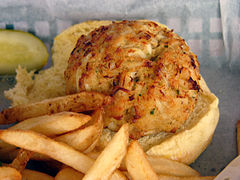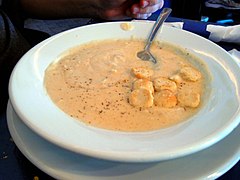
This is a list of crab dishes. Crabs live in all the world's oceans, in fresh water, and on land, are generally covered with a thick exoskeleton and are arthropoda and have a single pair of claws. Crab meat is the meat found within a crab. It is used in many cuisines around the world.














